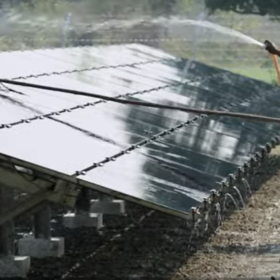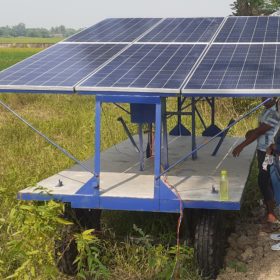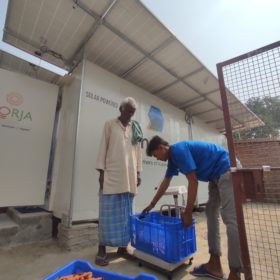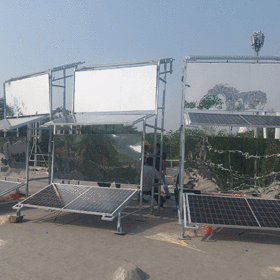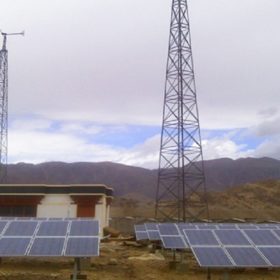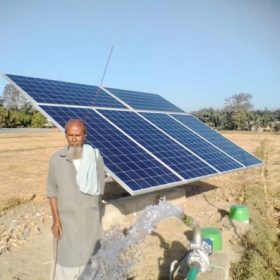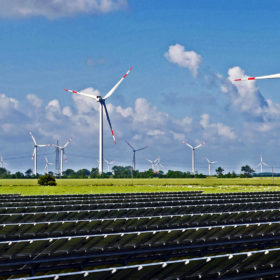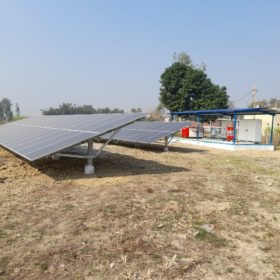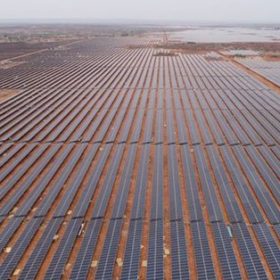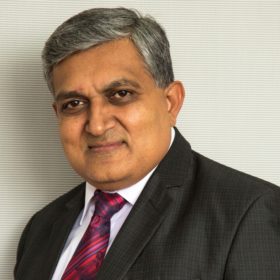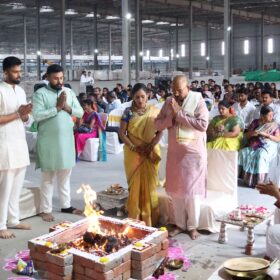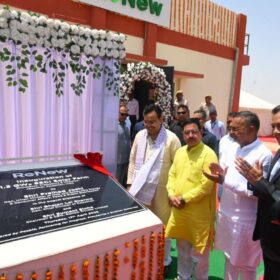Husk Power Systems secures largest-ever debt finance for solar microgrids in rural India
The Bihar-based rural clean energy services provider has received US$4 million from India Renewable Energy Development Agency (IREDA) to construct 140 microgrids in the states of Uttar Pradesh and Bihar.
Mobile solar pumping system deployed in remote areas
Researchers at the Indian Institute of Technology Bhubaneswar have developed a solar power system that can be easily moved between farms to pump water for irrigation. The kit comprises solar panels and an inverter to power a surface-mounted pump.
MNRE notifies framework for promotion of distributed renewable energy-based livelihood applications
The framework will guide the state-level and central government ministries and other stakeholders in formulating schemes and programs for the promotion of distributed renewable energy-based livelihood applications.
Portable, space-saving solar towers
Researchers at the Indian Institute of Technology Delhi have developed solar towers that can be moved from one place to another and can generate 20-30% more power while requiring only 50-60% space compared to conventional mounting setups.
Maharashtra tenders 865 MW of distributed solar
Bidders have until February 28 to lodge their interest in developing grid-connected, ground-mounted solar plants in sizes of 2-10 MW in various districts of Maharashtra. The ceiling tariff is fixed at INR 3.10/kWh.
Solar water pumps redefining farmers’ lives
With solar water pumps, farmers have access to high-quality power available for irrigation. These systems are portable and can be assembled at any preferred location. With the growing utilization of these systems, the costs have decreased substantially, making them an efficient, convenient, and cost-effective solution for grid-isolated rural areas.
Daily news roundup: Mecwin and KVG Bank partner on solar pump finance, Adani’s new energy arm
Bengaluru-based Mecwin Technologies Ltd and Karnataka Vikas Grameena Bank (KVGB) have partnered to finance solar pump-sets for farmers. Adani has formed a new energy arm called Adani New Industries Limited (ANIL).
Green Energy push for future sustainability in India
The core objective of renewable energy deployment in India is to promote economic growth, enhance energy security, increase energy access, and reduce climate change. Sustainable development is possible by the use of clean energy and by ensuring access to affordable and reliable energy for every citizen.
Microgrids make sense for Indian cities
Microgrids that use on-site renewables such as rooftop solar can help relieve peak demand on the grid during afternoons, and later in the evenings through battery storage. This can help power distribution companies (discoms) avoid buying expensive power to meet peak demand.
India has reached 46,247 MW of installed solar capacity as of October 31
Rajasthan (8,644 MW), Karnataka (7,483 MW), and Gujarat (6,052 MW) lead in solar installations.
